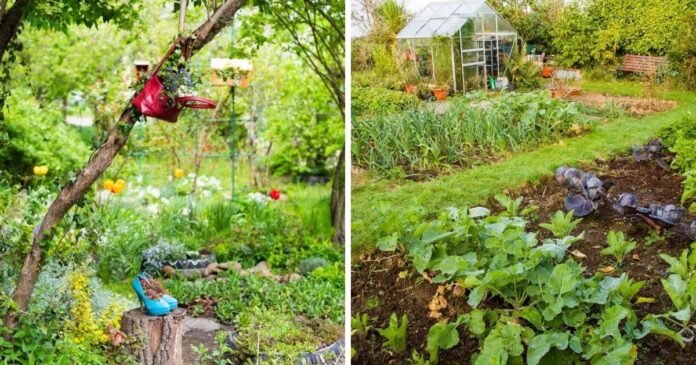Creating a Sustainable Oasis: Embracing Eco-Friendly Practices for a Greener Garden
Creating a sustainable garden not only benefits the environment but also enhances the beauty and productivity of your outdoor space. By adopting eco-friendly gardening practices, you can contribute to the preservation of our planet’s resources while creating a flourishing haven for plants, insects, and wildlife. In this article, we will explore seven essential sustainable gardening practices that will help you cultivate a greener and more harmonious garden.
-
Water Conservation:
Water is a precious resource, and using it wisely in our gardens is crucial. Opt for efficient irrigation methods such as drip irrigation or soaker hoses, which minimize water wastage by delivering water directly to the root zone. Additionally, collect rainwater in barrels to use for watering plants during dry periods. Mulching around plants helps retain moisture in the soil, reducing the need for frequent watering. Consider installing a rainwater harvesting system to maximize your water-saving efforts.
-
Organic Gardening:
Encourage biodiversity in your garden by creating habitats for wildlife. Plant a diverse range of flowering plants to attract bees, butterflies, and other pollinators. Include native grasses, shrubs, and trees to provide shelter and food sources for birds and small mammals. Avoid using chemical pesticides, as they can disrupt the natural balance of beneficial insects and other organisms. By utilizing sustainability and environmental resources to implement sustainable practices like organic gardening and pesticide avoidance, you support biodiversity and ensure the long-term sustainability of your garden’s ecosystem.
-
Native and Drought-Tolerant Plants:
Choosing plants native to your region not only supports local ecosystems but also reduces water requirements. Native plants have evolved to thrive in the local climate and are often more resilient to pests and diseases. Additionally, they provide crucial habitats and food sources for native wildlife. Furthermore, opt for drought-tolerant varieties that have adapted to survive with less water, reducing the need for excessive irrigation. By selecting appropriate plants for your region, you conserve water and create a vibrant, sustainable garden.
4. Biodiversity Promotion:
Encourage biodiversity in your garden by creating habitats for wildlife. Plant a diverse range of flowering plants to attract bees, butterflies, and other pollinators. Include native grasses, shrubs, and trees to provide shelter and food sources for birds and small mammals. Avoid using chemical pesticides, as they can disrupt the natural balance of beneficial insects and other organisms. By creating a biodiverse garden, you support the ecological web of life, enhance pollination, and contribute to the overall health of your ecosystem.
5. Composting and Mulching:
Transform kitchen scraps and yard waste into nutrient-rich compost by starting a composting system. Compost improves soil structure, enhances water retention, and reduces the need for synthetic fertilizers. Additionally, use organic mulch, such as wood chips or straw, around plants to conserve moisture, suppress weed growth, and regulate soil temperature. Mulching not only minimizes water evaporation but also helps prevent soil erosion and promotes a healthy soil ecosystem. By composting and mulching, you close the loop of organic matter and reduce waste while nourishing your garden.
Integrated Pest Management (IPM):
Implement an Integrated Pest Management approach to minimize the use of harmful pesticides. IPM involves monitoring and identifying pests, using physical barriers, attracting beneficial insects, and applying least-toxic control methods when necessary. This approach focuses on long-term prevention and ecological balance, creating a healthier garden ecosystem. By understanding the lifecycle of pests and using targeted strategies, you can effectively manage pest problems while minimizing the impact on the environment.
Seasonal Planting and Crop Rotation:
Practice seasonal planting and crop rotation to optimize garden productivity and reduce pest and disease problems. Different plant species have varying nutrient needs, and rotating crops helps prevent soil depletion. Additionally, growing seasonal vegetables and herbs minimizes the need for transportation and supports local food production. By aligning your planting choices with the natural rhythms of the seasons, you foster a more sustainable and self-sufficient garden.
Cultivating a Sustainable Legacy: Nurturing the Future of Our Gardens and Planet
By adopting these seven sustainable gardening practices, you can create an environmentally-friendly garden that promotes biodiversity, conserves resources, and contributes to the overall health of our planet. Through conscious choices like water conservation, organic gardening, and biodiversity promotion, you can make a significant impact on the sustainability of your garden and the wider ecosystem. By taking steps to conserve water, nourish the soil, and minimize the use of chemicals, you create a thriving garden that harmonizes with nature. So, let’s embrace these practices and cultivate a greener, more resilient future, one garden at a time. Together, we can make a positive difference for our planet and inspire others to follow in our sustainable gardening footsteps.













